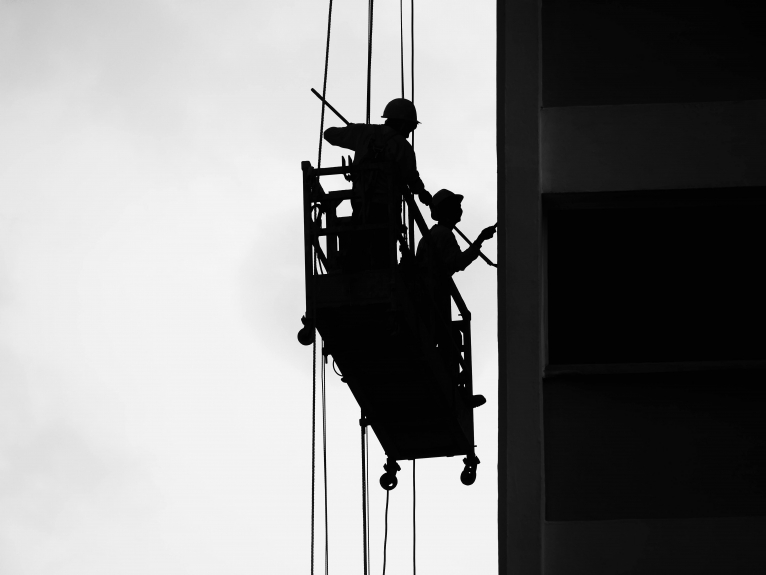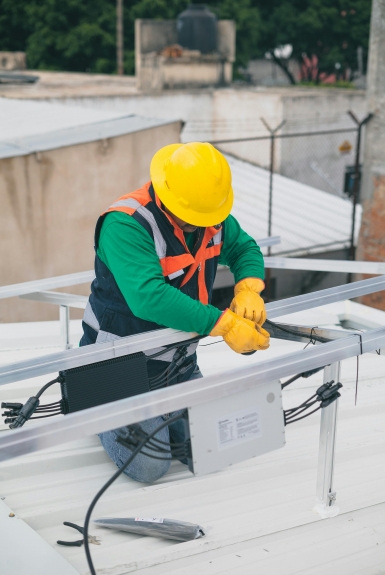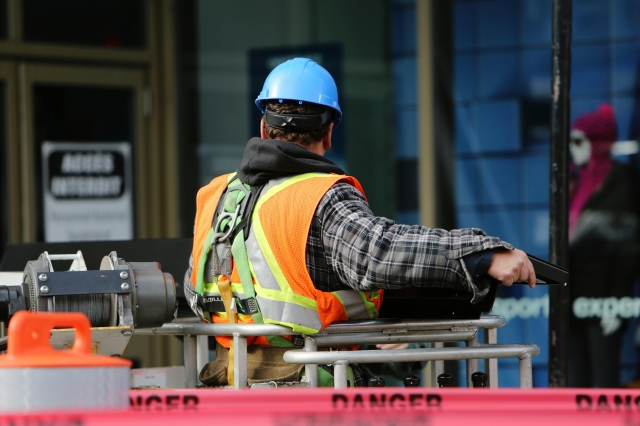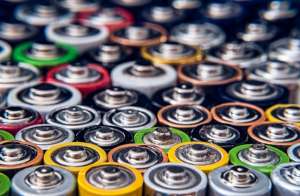Falls are among the most significant risks faced by workers across various industries, particularly in construction, manufacturing, and warehousing. Despite increased awareness and advancements in fall protection systems, many job sites still overlook critical hazards that can lead to serious injuries or fatalities. Addressing these hidden dangers is essential to foster a safe working environment and ensure compliance with industry standards.
One common example is unprotected leading edges, which are often underestimated despite their potential to cause severe injuries. Ensuring workers have proper protection in these areas is crucial, and solutions such as leading-edge SRLs can play a pivotal role in mitigating risks. However, this is just one of the many hazards that demand attention. In this guide, we'll explore seven overlooked fall protection risks and provide actionable advice to address each effectively.

1. Unprotected Leading Edges
A leading edge poses a unique challenge in fall protection as it requires equipment capable of withstanding added stress and sharp edges that can compromise traditional lifelines. Workers may be unaware of the additional risks associated with dynamic forces on these edges. Using an improperly rated system can lead to equipment failure, even if other safety measures are in place.
To address this issue, ensure workers use self-retracting lifelines designed for leading-edge applications. An ANSI Class 2 leading-edge SRL is specifically engineered to manage the unique forces, providing enhanced safety. Additionally, job site managers should conduct regular training to help workers understand the importance of using the correct equipment in these high-risk areas.
2. Improper Tie-Off Points
Tie-off points are foundational to fall protection, yet their suitability is often overlooked. Workers may use makeshift anchorage points, such as pipes or scaffolding, incapable of withstanding fall arrest forces. This mistake can lead to catastrophic equipment failures during a fall.
To combat this issue, ensure all anchorage points are engineered and certified to support the required loads. Concrete anchors are an excellent option, as they provide a secure attachment point designed specifically for fall protection systems. Educating workers about the dangers of improper tie-off points and training them on correctly using these anchors can significantly reduce risks.
3. Complacency with Equipment Inspections
Routine inspections of fall protection equipment are essential and mandatory, yet complacency can lead to missed warning signs of wear and tear. Inspections are especially crucial for equipment like full-body harnesses, which must remain in peak condition to function correctly. Ignoring frayed straps, damaged buckles, or worn-out components can compromise the entire system.
To implement regular assessments, establish a culture of accountability around equipment inspections. Workers should be trained to conduct pre-use inspections of all safety gear, with supervisors overseeing regular detailed evaluations. Any damaged or outdated equipment should be immediately removed from service and replaced to maintain a safe work environment.
4. Misjudging Fall Clearance
Another commonly overlooked hazard is failure to accurately calculate fall clearance, which is the minimum vertical distance required between the worker and the next lower level to prevent injury during a fall. Without proper clearance, even a well-functioning fall arrest system may not prevent a worker from hitting the ground or other obstacle.
Conduct fall clearance assessments for every job site to mitigate this risk, factoring in equipment specifications, worker height, and potential obstructions. Tools like a leading-edge SRL often include manufacturer guidelines that help determine appropriate clearance. Ensuring these calculations are part of the planning process can prevent serious incidents.
5. Neglecting Rescue Plans
While much attention is given to preventing falls, job sites often neglect to prepare for the moments after a fall occurs. A worker suspended in a harness after a fall is at risk of suspension trauma, a condition caused by restricted blood flow, that can become life-threatening if not addressed promptly. Without a clear rescue plan, valuable time is wasted during emergencies.
To prevent further injuries, incorporate detailed rescue procedures into every fall protection plan. Anchorage systems like concrete anchors can facilitate quicker rescues by providing stable tie-off points for rescue equipment. Conduct regular drills to ensure workers are familiar with these procedures and can act swiftly during an actual incident.
6. Overlooking Secondary Hazards
Secondary hazards, such as unstable walking surfaces, environmental conditions, and unsecured tools, are often overshadowed by primary fall risks. However, these hazards can contribute to falls or exacerbate their consequences. For example, wet or icy surfaces increase the likelihood of slips, while unsecured tools can strike workers during a fall.
Addressing secondary hazards requires a proactive approach. Conduct regular site audits to identify and eliminate potential risks. Installing non-slip surfaces, maintaining clear walkways, and securing loose tools are simple yet effective measures. Additionally, incorporating slip-resistant footwear into the personal protective equipment (PPE) requirements can further reduce risks.
7. Inadequate Worker Training
Even the most advanced fall protection equipment is ineffective without proper training. Workers who lack the knowledge to use equipment correctly, identify hazards, or follow safety protocols are more likely to make mistakes. Training gaps are particularly problematic when introducing new systems, such as full-body harnesses, that require specific usage techniques.
To address this, implement comprehensive training programs tailored to the unique challenges of each job site. These programs should include hands-on demonstrations, hazard identification exercises, and regular knowledge assessments. Reinforce training with periodic refreshers to ensure workers stay informed about the latest safety practices.

Building a Safer Job Site
Mitigating overlooked hazards requires a combination of proper planning, reliable equipment, and continuous education. By addressing leading-edge risks with appropriate SRLs, securing tie-off points with concrete anchors, and conducting regular inspections of full-body harnesses, companies can significantly enhance site safety. Encourages workers to take an active role in hazard prevention by fostering a culture where safety is prioritized.
Conclusion: Prioritizing Proactive Safety Measures
While fall protection systems have advanced significantly, many job sites still face preventable risks due to overlooked hazards. Addressing issues such as unprotected edges, improper anchorage, and inadequate training is crucial to create a safer work environment. By combining high-quality equipment with thorough training and proactive planning, companies can reduce the likelihood of falls and effectively protect their workers.
Investing in safety isn't just about compliance; it's about valuing human lives and fostering a culture of accountability. A job site that prioritizes safety creates a secure environment and a productive and resilient workforce.






